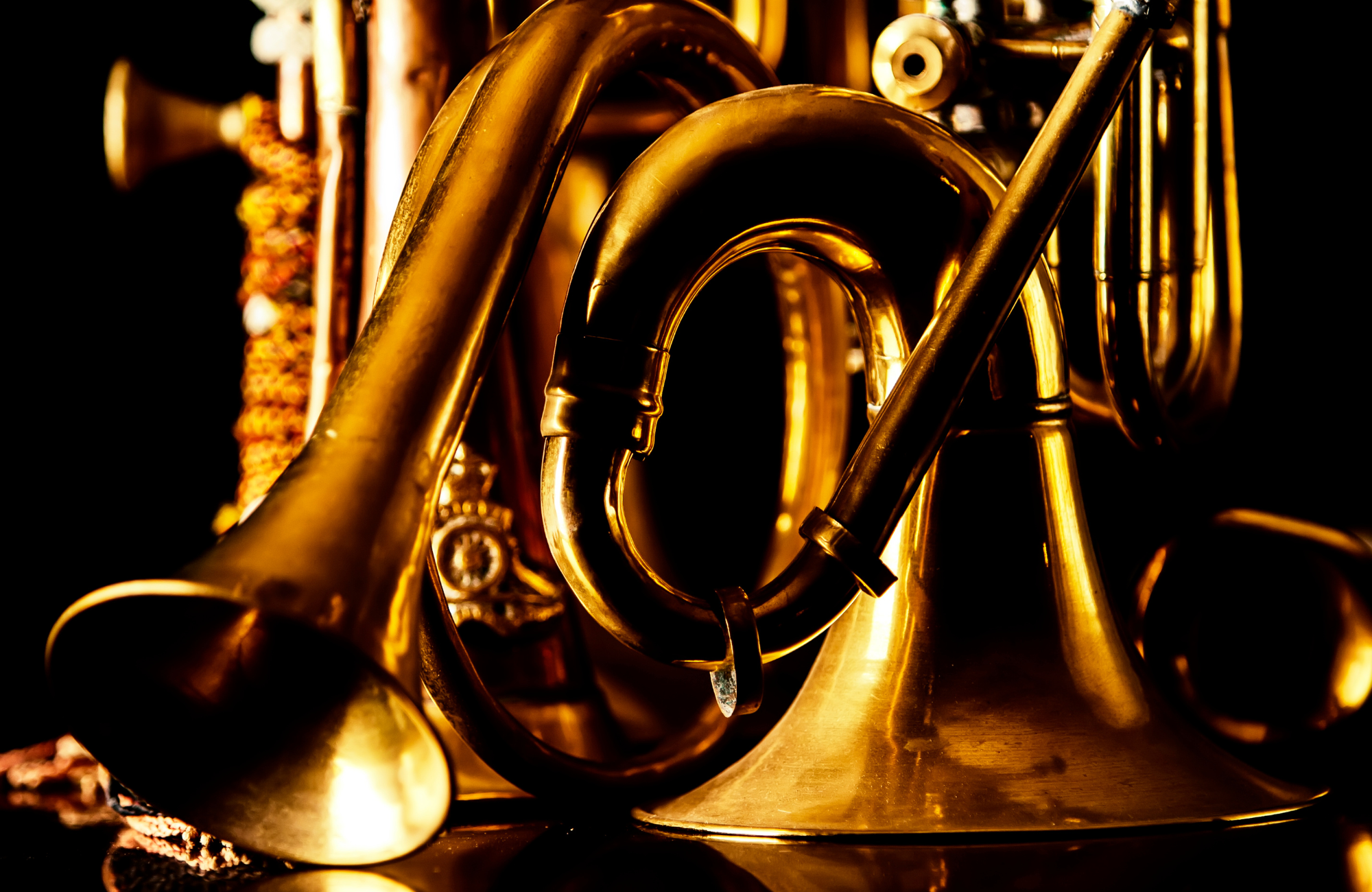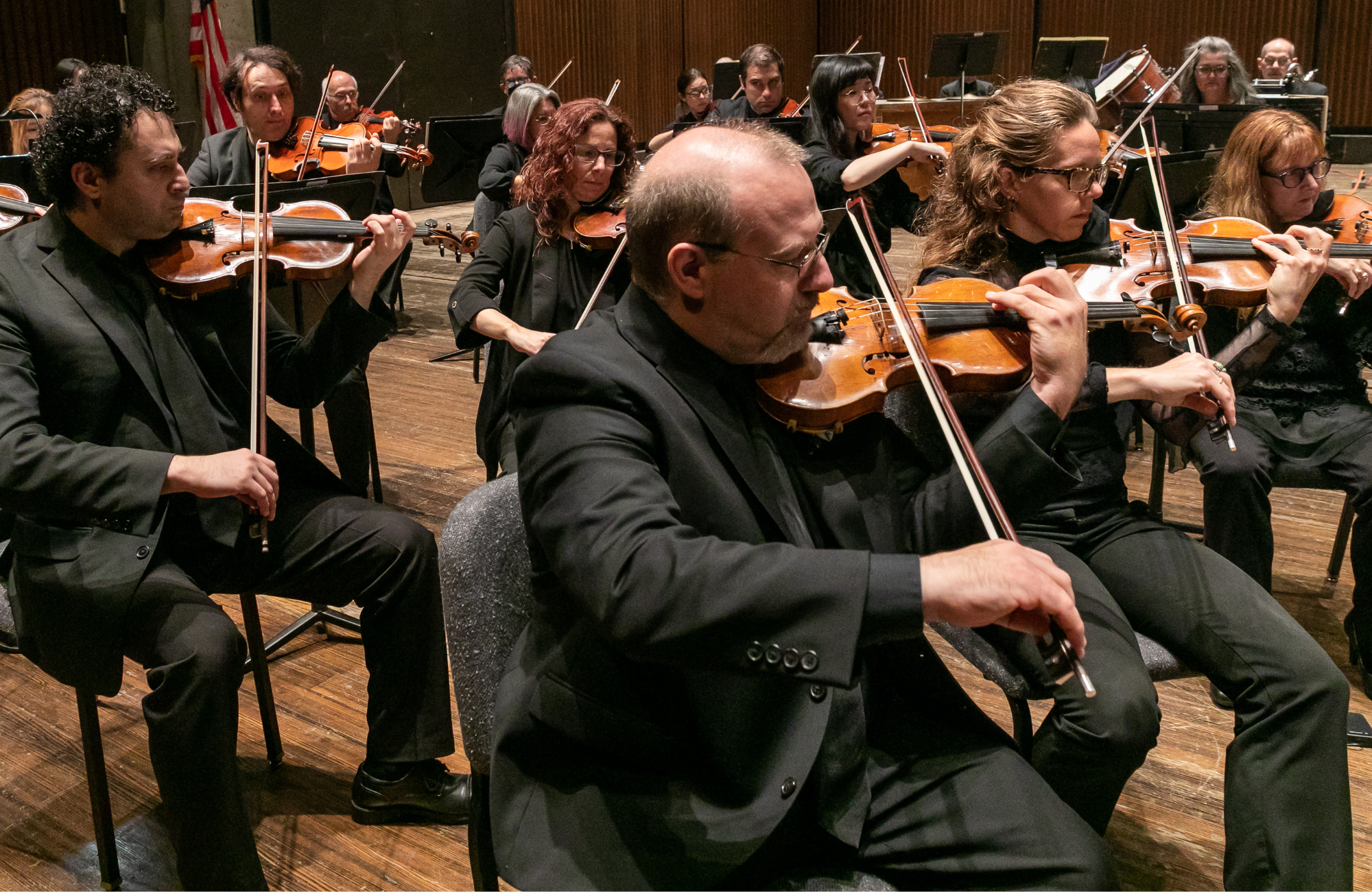Enjoy an afternoon of Latin American music, highlighted by the Guitar Concerto of Mexican composer Ponce featuring local favorite Kenneth Meyer. SYO Concerto Competition winner Abigail Feng joins for a performance of Elgar’s Concerto in E minor for Cello & Orchestra. Music by Chilean composer Enrique Soro and Argentinian composer Piazolla rounds out the concert. The dance and folk-inspired themes of these pieces will move and inspire you. This performance is a companion to the New World Symphony and More concert on February 15.
PROGRAM
SORO: Tres aires chilenos ![]()
ELGAR: Concerto in E minor for Cello & Orchestra, Opus 85 (Abigail Feng) ![]()
PONCE: Guitar Concerto (Ken Meyer) ![]()
PIAZZOLLA: Tangazo (Variations on Buenos Aires) ![]()
*NO INTERMISSION
LARRY’S LISTENING RECOMMENDATIONS
PROGRAM NOTES
One of the highlights of our 2020–2021 season was supposed to be a three-concert festival devoted to “American music.” The repertoire was chosen to reflect a broad conception of the term. For while “American music” is often applied loosely to refer to music written by composers from the United States, there is, of course, a great deal of other music from North and South America, as well as significant interaction among the composers of the two continents. The first US composer to achieve world renown was Louis Moreau Gottschalk, who drew much of his inspiration from Latin America; Aaron Copland ...
One of the highlights of our 2020–2021 season was supposed to be a three-concert festival devoted to “American music.” The repertoire was chosen to reflect a broad conception of the term. For while “American music” is often applied loosely to refer to music written by composers from the United States, there is, of course, a great deal of other music from North and South America, as well as significant interaction among the composers of the two continents. The first US composer to achieve world renown was Louis Moreau Gottschalk, who drew much of his inspiration from Latin America; Aaron Copland and Carlos Chavez were close associates; Alberto Ginastera’s stunning opera Bomarzo, banned in Argentina, had its premiere in Washington; Copland’s El Sálon México was premiered in Mexico City. We designed our festival to explore those relationships.
Needless to say, that season was disrupted by Covid, and those concerts had to be replaced by smaller, virtual events. Still, our commitment to expanding the notion of American music has remained. Since then, we’ve taken up many of the composers and works we had hoped to present then; and this season, we’re offering a pair of concerts that echoes our Festival That Never Was. The first was our Masterworks 6, which featured two works by US composers (Copland and Adams)—along with Dvořák’s New World Symphony, which was composed in the United States and had an incalculable effect on our national classical-music style. This afternoon, we follow up with a concert offering three approachable 20th-century Latin American works, each strikingly different in character.
The program opens with Tres aires chilenos (Three Chilean Airs) composed in 1942 by Enrique Soro (1884-1954). Like so many composers from the Americas at the time, Soro was trained in Europe—although instead of ending up in Paris (as Chavez, Copland, and Astor Piazzolla did), he turned to Milan, where his father (also a composer) had studied. But he returned to his native Chile for most of his life, serving as an influential teacher and helping to establish the Chilean classical tradition. As tonight’s conductor Fernanda Lastra reminds us, his “Sinfonia Romantica” is generally claimed to be Chile’s first symphony.
This afternoon’s work is something of an outlier in his output—one of his rare works to be grounded in vernacular idioms. The main inspiration, says Fernanda, is the cueca, a musical genre found in Chile and the north of Argentina. Apparently, the melodic material is Soro’s own. But in rhythm, gesture, and form, this vital and enlivening work clearly reflects folk traditions. (In this regard, the work has something in common with some of Copland’s music, which evokes the essence of US folk music without quoting it.) If you remember Soro’s Andante Appassionato, which we performed in 2022 on another American-music Casual, you won’t be surprised by the attractiveness of this triptych—and may well find yourself humming it on your way home.
The 1941 Concierto del Sur (Concerto of the South) for guitar and orchestra by Mexican composer Manuel María Ponce (1882–1948) is just as inviting, although quite different in temperament—nearly, says Fernanda, “in a different language.” Ponce was a wide-ranging composer with a strong interest in the popular and folk music of his country, himself penning popular songs (including the once famous “Estrellita”), arrangements of folk music, folk-inflected “classical” works—as well as music that looked back to the history of European classics. (In fact, like violinist Fritz Kreisler, he wrote a number of classical “forgeries” that were published under the names of long-deceased Baroque composers.) He was a close friend of guitar virtuoso Andrés Segovia (this concerto was written for and premiered by him), and his contribution to the guitar repertoire is immense, even though, curiously, he did not play the instrument himself.
The Concierto del sur developed over a long period—from 1926 to 1941—in part because of anxiety that the guitar would be drowned out by the orchestra. In the end, though, Ponce’s transparent orchestration (four woodwinds, timpani, and strings) not only gave the soloist prominence, but also introduced an opportunity for delightful chamber-music-like conversations between the guitar and the woodwinds. Add to this its melodic charm, its canny references to the Baroque period, and its spectacular first-movement cadenza—and it’s no surprise that it has become one of the most beloved guitar concertos of the twentieth century.
The concert closes with Tangazo, composed in 1970 by Astor Piazzolla (1921-1992). Over the past few years, Piazzolla has become the most popular Argentinian composer in the United States—the orchestra has already performed his Four Seasons of Buenos Aires and his Fuga y misterio. He spent his early years in New York, where he immersed himself in a variety of musical traditions, including classical, jazz, and traditional Argentine tango. He moved back to Argentina in 1936, where he struggled for years to settle on a style, performing on the bandonéon (a type of concertina popular in Latin America) in tango groups and studying classical music with Alberto Ginastera, among others. Eventually, he won a chance to study in Paris with legendary teacher Nadia Boulanger, who gave him the confidence to stop “following the rules” (as Fernanda puts it) of traditional “classical” music and to develop the tango idiom in which he best expressed himself. She elaborates: “He needed someone to validate his ‘intuition’ that he had something valuable to offer to the world as a composer.”
All those years of searching paid off, for even after he settled on the tango, he never rejected the other influences on his idiom. He was thus able to merge tango with classical
(especially Baroque) and jazz traditions, producing an idiom with a new complexity that eventually became known as the nuevo tango (new tango). If, as Fernanda suggests, Ponce’s concerto is classic in outlook, Piazzolla “is creating a new language,” one that “takes more risks” than Ponce’s does, one that “goes to the edge.” And if Soro’s Tres aires chilenos celebrates the innocent folk music of rural areas, Tangazo is essentially urban music—especially music of Buenos Aires—of great sophistication. Among other things, Fernanda points out, Piazzolla uses “tons of effects,” drawing unusual, often percussive, sounds from his strings—for instance, chicharra, a sound effect produced by playing with the bow placed behind the bridge; latigo, or whip, a very fast glissando; and tambor, which creates a drum-like effect. Piazzolla was obsessed with the sound of the traffic of Buenos Aires, she reminds us; and you’ll definitely hear that in this piece.
The orchestra’s 2020-2021 season is evoked in another way in this concert as well. Those of you who were audience members then may remember how rapid changes in health regulations led to rapid changes in programming. Hence the motto we used at the time: Expect the Unexpected. And there’s something wildly unexpected on this afternoon’s concert, too: the finale of the Concerto for Cello and Orchestra composed in 1918–19 by Sir Edward Elgar (1857–1934). Obviously, it doesn’t fit, geographically or stylistically, with the rest of the program: but as we’ve often done in the past, we’ve made room to introduce the winner of the Civic Morning Musicals Youth Concerto Competition, who this year is Abigail (Abby) Feng—a student of cellist David Ying, well known as a member of the Ying Quartet.
The Elgar is not only unexpected in the context of this program—it’s also unexpected in the repertoire of such a young musician. First, it grew out of Elgar’s recognition of personal mortality: he had just gotten out of the hospital when he began it, and his beloved wife Alice was dying of lung cancer as he wrote it. Second, there was Elgar’s growing belief that, having briefly been the standard-bearer for modern English music, his renown would be fleeting—that in the wake of the radical works of Stravinsky, Schoenberg, and others, his Edwardian idiom would be increasingly scorned as old-fashioned. (His fears turned out to be unfounded, and his reputation is now more solid than ever.) Most important, the First World War had destroyed the Europe—indeed, the world—that he knew. Whether it was a conscious intention or not, the Cello Concerto turned out to be his farewell to composing; although he wrote a few snippets afterwards, this was his last substantial work.
In other words, the concerto is a work of pain, loss, and nostalgia—surely a bit much for a seventeen-year-old cellist? Abby disagrees. She’s been caught up by this concerto since she was in sixth grade—and although she recognizes that her teacher at the time (Syracuse Orchestra cellist Walden Bass) was right that she didn’t have either the musicality or the technique to handle it then, she’s a different person now. In particular, she’s been influenced, in her interpretation, by several profound experiences: the death of her grandfather and, later on, the suicide of a friend. “I was studying the first movement of the Elgar, and I used the music to sort through my emotions, and really let it out.” As for the technical challenges: Interestingly, when she mentions them, there is something that touches on the sonic adventure of the Piazzolla. “There are a lot of different types of sound that I have to produce. Sometimes I need a really smooth bow, and very solid articulation, and then sometimes I have to do really short and jumpy stuff. Also, changing the way I shift and the way I do vibrato makes everything sort of stand out.” This performance is especially meaningful to her: “I'm really grateful and honored for this opportunity to play with the orchestra, and since I was young, I've watched them. They’re really inspiring.”
As they are to so many of us!
Peter J. Rabinowitz
Have any comments or questions? Please write to me at prabinowitz@SyracuseOrchestra.org
FEATURED ARTISTS
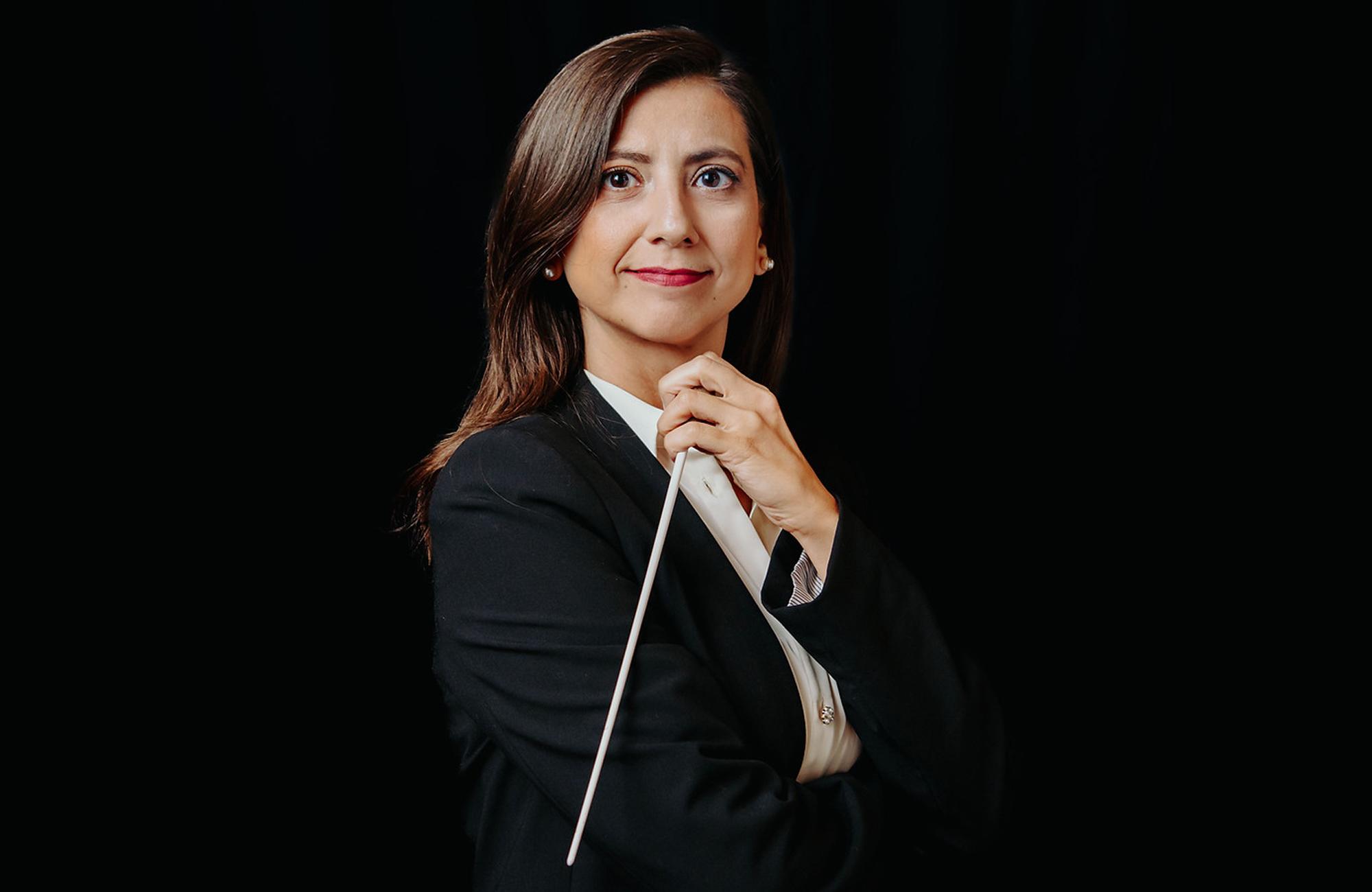
Fernanda Lastra holds the position of Assistant Conductor, Diversity Fellow for the Buffalo Philharmonic Orchestra, under the mentorship of JoAnn Falletta. Born in Mar del Plata, Argentina, she is a passionate and creative conductor recognized for her artistic leadership and engaging performances.
Committed to featuring diverse voices ...
Fernanda Lastra holds the position of Assistant Conductor, Diversity Fellow for the Buffalo Philharmonic Orchestra, under the mentorship of JoAnn Falletta. Born in Mar del Plata, Argentina, she is a passionate and creative conductor recognized for her artistic leadership and engaging performances.
Committed to featuring diverse voices in concert halls, Lastra is an advocate for Latin American composers, particularly those from Argentina. She is equally dedicated to creating well-balanced and diverse programs that enhance the overall concert experience. In addition, Lastra is passionate about community engagement and music education, believing in the transformative power of music to unite, heal, and develop emotional intelligence.
In 2022, Lastra was appointed Conductor Diversity Fellow and was promoted in 2023, accompanied by a one-year contract extension. In this role she serves as assistant conductor, cover conductor, and main conductor for the BPO Family Kids series, Music for Youth concerts, and community engagement performances. Lastra also serves as a member of the BPO’s artistic team, the BPO’s music education committee and the BPO’s Diversity Council, among other responsibilities.
As an assistant and cover conductor, Lastra has worked alongside esteemed conductors such as JoAnn Falletta, Giancarlo Guerrero, Maximiano Valdés, Gerard Schwarz, Mei-Ann Chen, Joseph Caballé-Domenech, and Michael Francis, among others. Additionally, she has collaborated with artists such as Aida Cuevas, Jay White, Jeans’n Classics, Michael Grandinetti, and Troupe Vertigo, for Pops and special concerts. In May 2025, Lastra is scheduled to make her debut with the Buffalo Philharmonic in the classic series featuring pianist Avery Gagliano.
Apart from her leadership role with the Buffalo Philharmonic Orchestra, Lastra regularly collaborates as a guest conductor with professional and youth orchestras. Past performances have involved engagements with the South Bend Symphony, the Walla Walla Symphony, The Birch Festival, where she collaborated with musicians from the Boston Symphony, and the Pacific Conservatory of Music. Upcoming collaborations include engagements with the, the Fort Wayne Philharmonic, the Pennsylvania Chamber Orchestra, the Portland Symphony and the Minnesota Orchestra.
In 2023, Lastra received a prestigious recognition from Argentina’s National Classical Radio at their annual “Premios Nacional Clásica” and in November 2024, she was presented with the “Career Advancement Award” at the Women in Classical Music Symposium held by the Dallas Symphony.
In 2022, Lastra led the production of Missy Mazzoli’s opera, Song from the Uproar, in collaboration with Demaskus Theatre and Kassia Ensemble in Pittsburgh. She also conducted the National Orchestra of Argentine Music “Juan de Dios Filiberto” at the CCK National Auditorium in Buenos Aires. Older engagements include leading the University of Iowa’s 2019 production of Little Women by Mark Adamo, the Revival Theatre Company’s production of the legendary musical Oklahoma, and serving as an assistant conductor for for Cavalleria Rusticana for Musiques des Lumières.
Previous career highlights for Lastra include her participation in the Cabrillo Festival of Contemporary Music in 2021 and 2022, led by Cristian Măcelaru, reaching the finals for the Assistant Conductor position at the Chattanooga Symphony Orchestra in 2019, and earning First Prize in the conducting competition held by Opéra de Baugé in France in 2018.
As a conductor-educator Lastra served as Director of Orchestras at Augustana College, Rock Island, IL (2021-22), as Assistant Conductor for the UI Symphony Orchestra (2018-22) and for the PSU Philharmonic (2016-18), as a conductor for the Central Pennsylvania Youth Orchestra (2016-17), as a professor of orchestral activities at El Sistema in Argentina (2008-12), and as faculty at La Plata University, Argentina (2005-2016). In 2013, Lastra founded “La Trama Ensamble,” an instrumental training ensemble, which she led for four years as music and artistic director.
Lastra holds two Bachelor’s degrees in Orchestral and Choral Conducting from La Plata National University, a Master’s degree in Orchestral Conducting from Penn State University, and a Doctoral degree in Orchestral Conducting from The University of Iowa. Additionally, she has a background in ballet training and over 15 years of experience as a chorus member performing masterworks and a cappella repertoire.
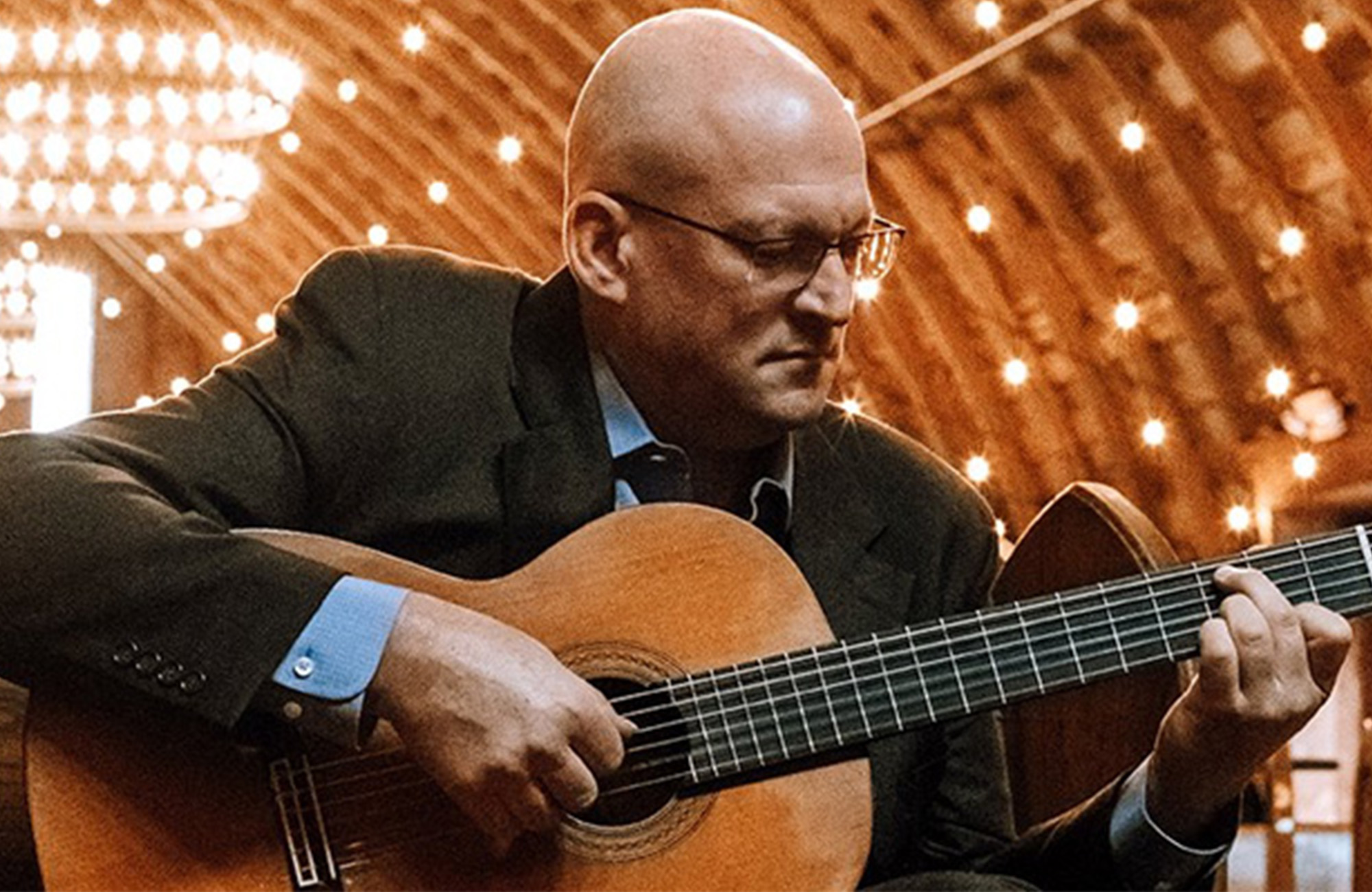
Kenneth Meyer, the national first-prize winner at the Music Teacher’s National Association Collegiate Artist Competition, is regarded by the Washington Post as, “A thinking man’s guitarist – he focuses on the inner structure of a piece…and plays with impressive gravity and power.” The Buffalo ...
Kenneth Meyer, the national first-prize winner at the Music Teacher’s National Association Collegiate Artist Competition, is regarded by the Washington Post as, “A thinking man’s guitarist – he focuses on the inner structure of a piece…and plays with impressive gravity and power.” The Buffalo News has called him, “Impeccably articulate with superb technique.”
Since his professional concert debut at the Teatro de la Opera de Maracay, Mr. Meyer continues to appear in recital, as a chamber musician, and soloist with orchestra in venues throughout North America, South America, Europe and Asia. In addition to live concerts, his performances have been featured on television, film, radio and most recently, on the Albany, Innova, Bridge, and Frameworks record labels.
Frequently in demand as a guest artist at colleges and universities across the country, Meyer has given concerts and lectures at, among others, the Eastman School of Music, the State University of New York College at Fredonia, Syracuse University, Cornell University, the University of Southern Mississippi, North Carolina School of the Arts, the University of Wisconsin at Milwaukee, Hochstein School of Music, Delta College, Canisius College, Finger Lakes and Saint Joseph’s Community Colleges and the University of Caracas in Venezuela. In addition, he is an active performer and teacher at music festivals and has been featured at the Rome, Alexandria, Eastman Guitar Summerfest and the Alirio Diaz Guitar Festivals.
Mr. Meyer’s commitment to the cultivation and performance of new music has led to awards from the Barlow Endowment, the Argosy Foundation, and the Eastman School’s Hanson Institute for American Music; interpretive instruction from Milton Babbitt, and premiere performances of compositions by among others, Natalie Draper, Leslie Basset, Edward Green, Andrew Waggoner, Gregory Mertl, Edie Hill, Kevin Ernste, Nicolas Scherzinger, Jesse Benjamin Jones, Donald J. Sparr, James Piorkowski and Robert Baker. His diversity as a musician has led to performances on mandolin, banjo and electric guitar with among others, the Syracuse Opera, the Syracuse Society for New Music and the Broadway touring production of the Who’s rock opera, “Tommy.”
Previous concert tours include trips to Venezuela, Rome, Canada, Romania, Hungary, Malaysia, Thailand, and Singapore. He has appeared in concerto performances with Symphoria, the Long Island Philharmonic, the Erie Chamber Orchestra, the Niagara Symphony Orchestra, and the Seattle Modern Orchestra. He has recorded for Innova, Frameworks, Albany, Summit, and Bridge
His latest commercial recording, A Seeker’s Song was released on the Frameworks record label and his book titled, Diatonic Arpeggios for Classical Guitar is published through Mel Bay. Both are now available online.
He holds degrees in Music Composition and Classical Guitar Performance from the State University of New York at Fredonia and Master of Music and Doctor of Musical Arts degrees from the Eastman School of Music. He has served on the faculties of East Carolina University and SUNY at Fredonia and most recently held visiting professorships at the Eastman School of Music and SUNY Potsdam’s Crane School of Music.
Currently, Dr. Kenneth Meyer serves as a lecturer/affiliate artist at Hamilton College and Syracuse University. He serves on the board of directors for the Great Lakes Guitar Society, the Classical Guitar Society of Upstate New York, and the Twisted Spruce Music Foundation. He also founded and directs the Mohawk Valley Childbloom classical guitar program in New Hartford.
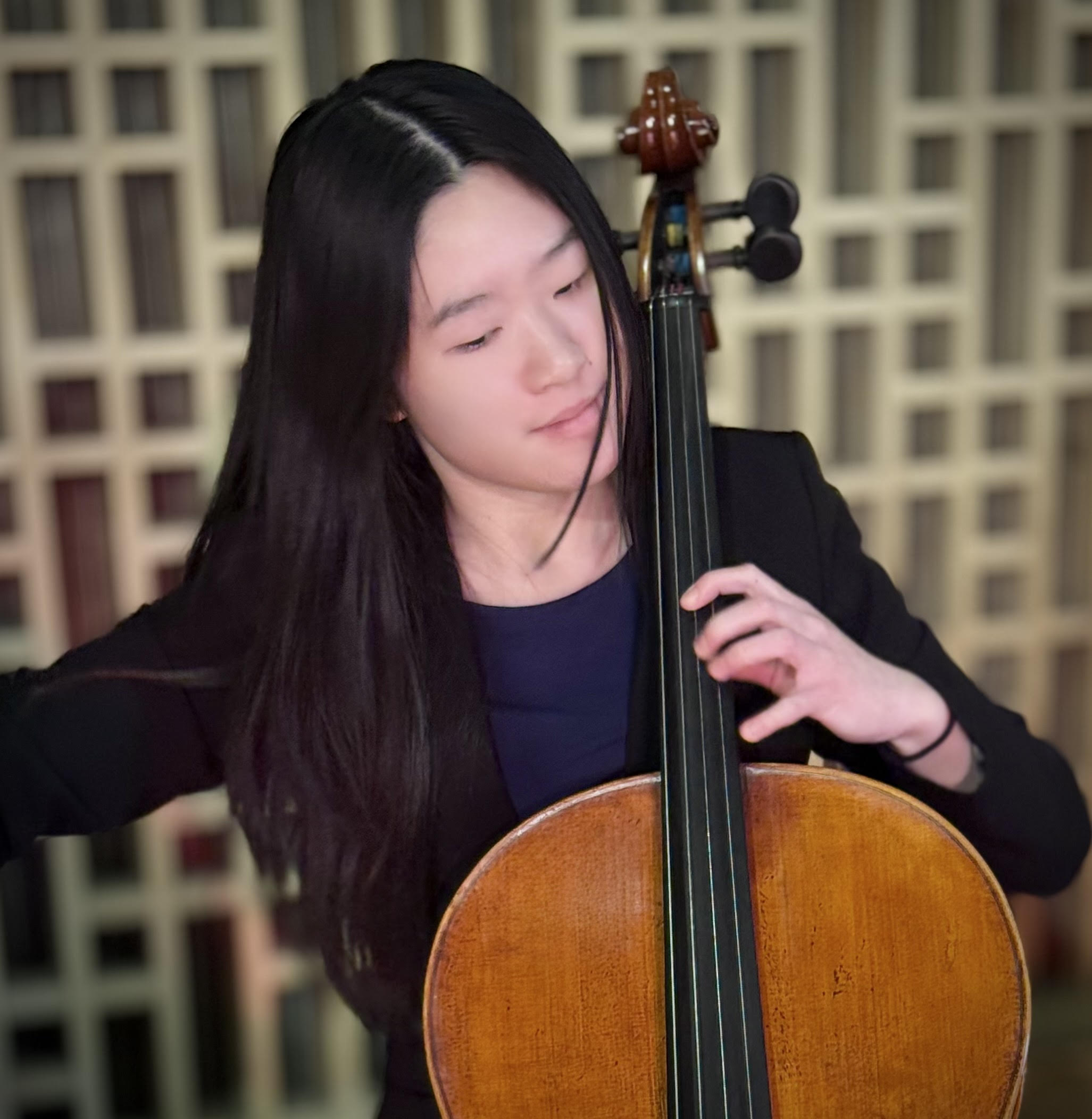
Cellist Abigail Feng, senior at JDHS, was the winner of the 53rd Civic Morning Musicals/The Syracuse Orchestra Concerto Competition, the 2024 Syracuse Youth Orchestras Concerto Competition, the 2024 Syracuse Friends of Chamber Competition, and the 2024 Central New York Association of Music Teachers Instrumental Competition. She has been the principal cellist ...
Cellist Abigail Feng, senior at JDHS, was the winner of the 53rd Civic Morning Musicals/The Syracuse Orchestra Concerto Competition, the 2024 Syracuse Youth Orchestras Concerto Competition, the 2024 Syracuse Friends of Chamber Competition, and the 2024 Central New York Association of Music Teachers Instrumental Competition. She has been the principal cellist of The Syracuse Orchestra Young Artists Orchestra since 2023 and was assistant principal of the 2024 New York Conference All-State Symphonic Orchestra. Abigail studies with David Ying and will receive her Honors Diploma in Cello Performance from Eastman Community Music School this year.


